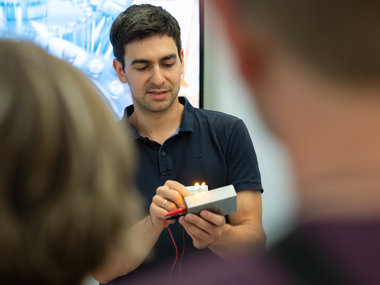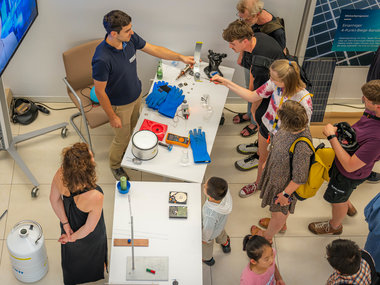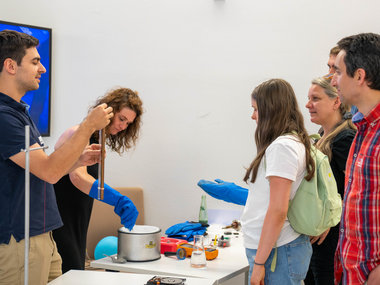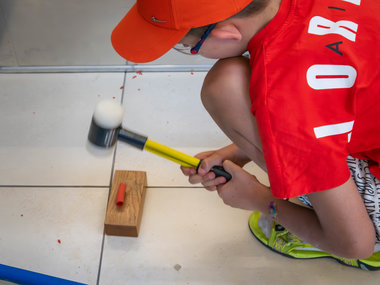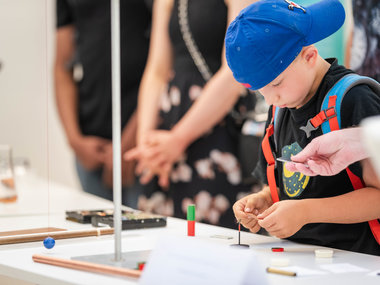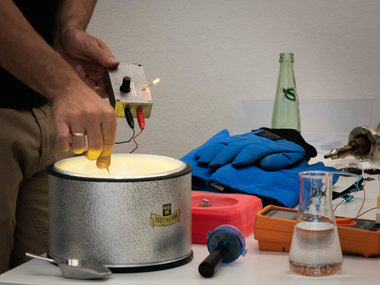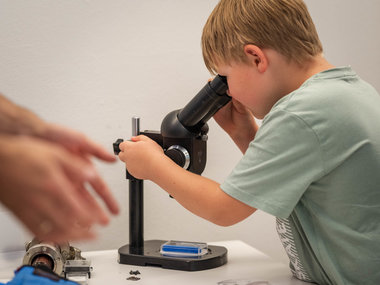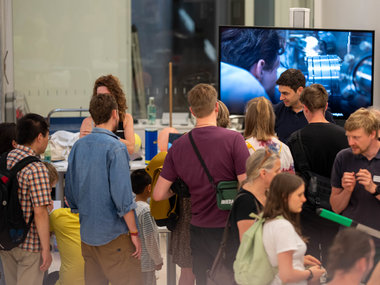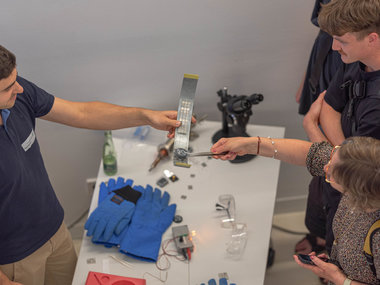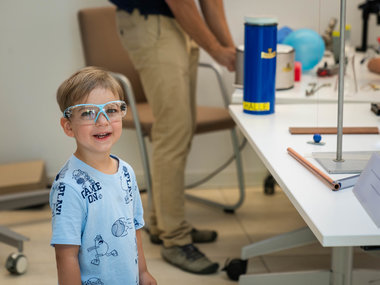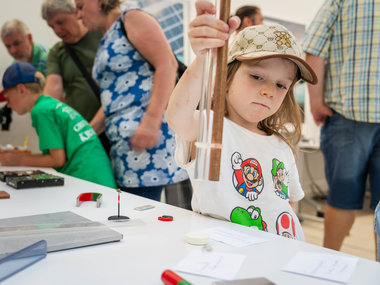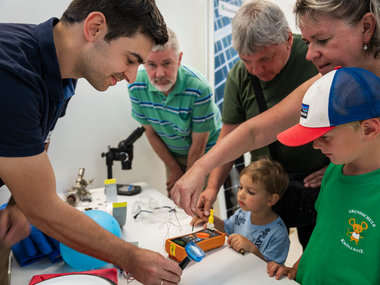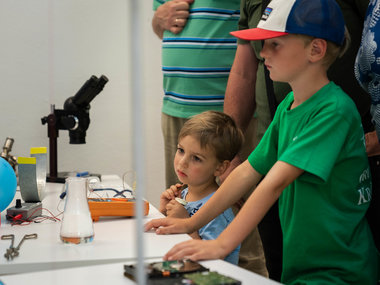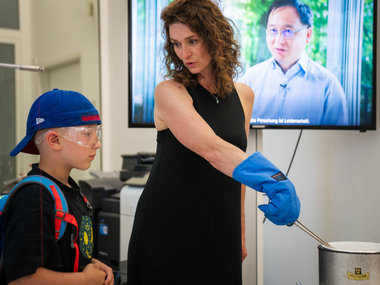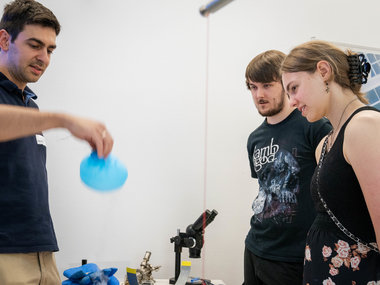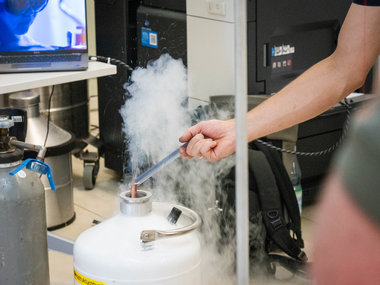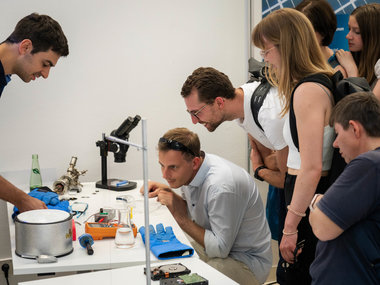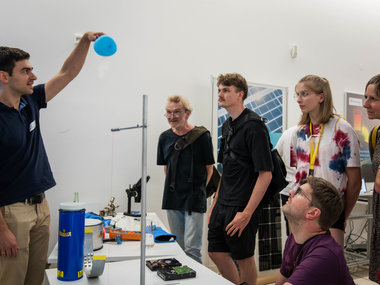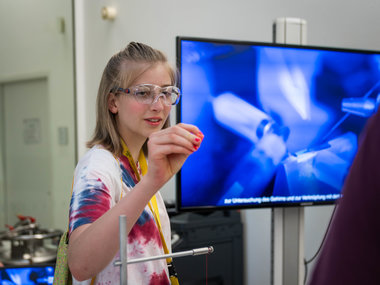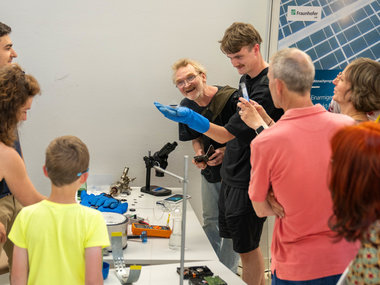20th Anniversary year - Long Night of the Science in Halle
At the largest science event in Saxony-Anhalt, the Max Planck Institute of Microstructure Physics presents captivating experiments that bring physics to life in a vivid way.
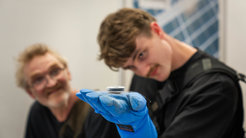
Visitors of all ages were captivated by the sight of floating superconductors, the exploration of magnetism, and numerous experiments with liquid nitrogen.
Felix Küster, a scientist at the Max Planck Institute of Microstructure Physics in the department Nano-Systems from Ions, Spins, and Electrons, conducts research on novel materials at an atomic scale. These new materials can combine properties such as magnetism and superconductivity at the quantum level, giving rise to previously unknown phenomena. The discovery of the research, on which Felix Küster is working, will serve faster and more efficient computer technology of our future.
In various experiments with dry ice and liquid nitrogen, temperatures were presented, up to -196° Celsius, which are so cold and unfamiliar to everyday life that it is difficult to imagine what happens to various materials at this cold temperature. A highlight for all visitors was the floating superconductor above a magnet on their own hand. This experiment illustrates the "Meissner-Ochsenfeld effect". This effect was demonstrated with the help of a high-temperature superconductor cooled in liquid nitrogen.
"The change of material properties depending on temperature is a common investigation method in our research to encounter and study new phenomena. In the process, our samples are cooled even further in the laboratory using liquid helium," Küster proudly explains to the visitors of the Long Night of the Science.

